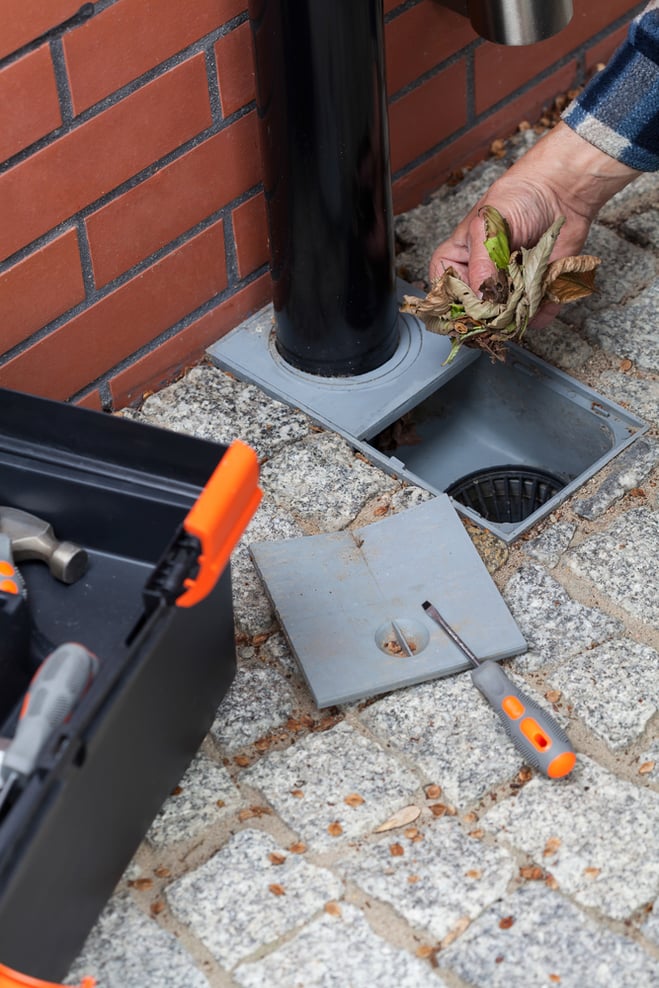
The most effective kind of maintenance is preventive. That means being proactive and checking critical areas for potential threats before you have an expensive problem on your hands. By conducting regular building maintenance, you’ll keep your property healthier and safer for everyone who works or lives there.
You could also save yourself a lot of money by avoiding costly repairs. Consistent preventive maintenance can lead to a higher return on investment (ROI) if you decide to sell. By keeping every primary system in your building running smoothly, you can avoid premature breakdowns.
Routine Maintenance Tasks to Protect Your Building Investment
Just as your car and your teeth need regular checkups to keep them healthy, your building needs routine maintenance. Some commercial buildings last well over 100 years, while others don’t even make it to 50. How long yours lasts depends in part on how well you maintain your property over the long term. To enhance your property value and prevent expensive problems down the road, perform the following inspections (or hire a professional to do them for you).
1. Inspect the Roof
Have a professional roofing contractor you trust inspect your commercial roof twice a year (more if you experience severe weather). Professionals can spot subtle problems you may overlook and fix small issues before they become costly disasters. Never walk on your building’s roof. It could cause damage that shortens its life expectancy. In the winter, consider hiring a professional snow removal company—especially if you have a flat roof. The weight can add extra strain and lead to structural damage.
Inspect the inside of your building for signs of water damage or leaks. If you notice a musty smell, water stains, or bulging spots on ceilings or walls, call a professional to locate the source of the leak and repair it immediately to prevent further damage.
2. Clean the Gutters
Clean your gutters at least twice a year—in the fall and spring. If your gutters are clogged during the rainy or snowy seasons, disaster can strike suddenly. When water can’t flow freely from your roof to the ground, it can pool and leak through your ceiling or drip down siding into your building’s foundation. This water can freeze and form ice dams in the winter that can lead to gutter breakage, cracks in shingles, and water damage in your building.
If they are safely accessible, you may be able to clean the gutters on your own commercial building. Be sure to use a sturdy ladder, stay off the roof, and remove all debris. Afterward, use a hose to flush out your gutters and downspouts to ensure water flows to the ground properly.
3. Service Your HVAC Systems
Ensure your building heats, cools, and transports air correctly by performing regular maintenance tasks. These routine checks can keep your system clean and running strong to minimize energy bills and boost your building’s energy efficiency.
- Clean outdoor air screens and exhaust fan screens once a year.
- Check your thermostat annually to see if you need to replace batteries.
- Change your furnace filter (monthly or quarterly, depending on your filter type).
Hire an HVAC professional to handle these tasks:
- Inspect and tune up your air conditioner every spring.
- Annually inspect the water heater, water main, and boiler to ensure nothing is leaking.
- In the fall, inspect and tune up the furnace to prepare it for winter.
4. Add Steel
To enhance your building’s ROI and extend its life, consider adding steel siding or roofing. Steel is durable, stable, environmentally friendly, and customizable. It can give your commercial building a sleek, modern look. Steel can outlast more conventional building materials like wood. Some steel roofs have a projected lifespan of 40–70 years, and steel siding has a lifespan of around 40 years.
Steel is resistant to fire, corrosion, moisture, and insect infestations. It not only lasts longer than other materials, but high quality steel also requires less upkeep. Simply wipe down your siding once or twice a year to remove dirt and prevent fading. Inspect your steel roof twice a year for any potential issues.
5. Fix Plumbing Problems Immediately
Plumbing systems can be easy to maintain. However, if you aren’t proactive, small, pesky problems can turn into expensive water damage, repair bills, or even a plumbing disaster. Here are several ways to save money by maintaining your plumbing systems.
- Stop running toilets to avoid wasting water and chances of waste blockage in your plumbing system. Your toilet may have a leak, a corroded handle, a broken chain, a faulty fill valve, or a broken flush valve or flapper seal.
- Fix drains that don’t drain properly. You may have a clog or soap buildup in your drain.
- Drain your water heater regularly to expel any sediment buildup and increase its efficiency. If you don’t, your water heater could break down prematurely.
- Fix leaking faucets Monitor all faucets throughout your facility to prevent leaks from going unnoticed and causing severe water damage.
- Check your system’s water pressure using a water pressure gauge. Low water pressure can be a nuisance, but high water pressure can pose a real problem. It can damage plumbing fixtures and cause appliances to break down faster than they should. You may need a plumber to adjust your building’s water pressure if it’s too high.
For more tips on maintaining commercial and residential buildings, subscribe to the Pro-Line Building Blog!

.svg)